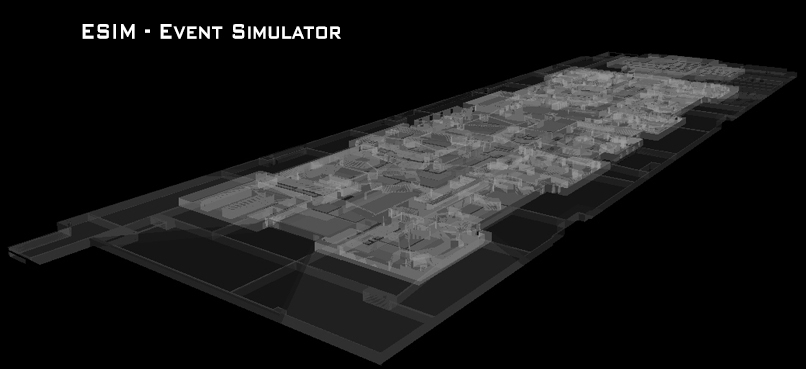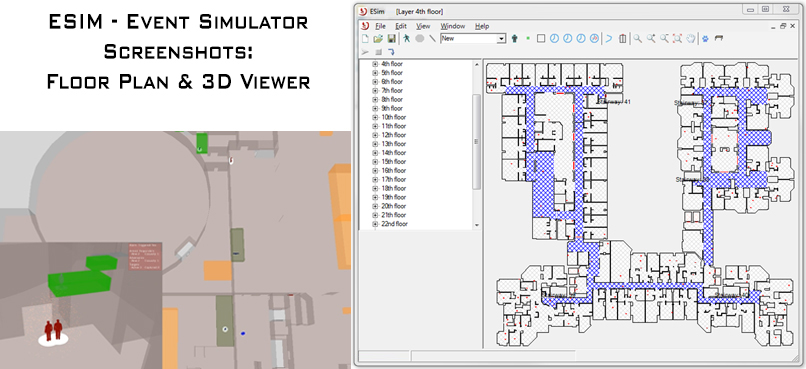E-Sim: Computerized Event Simulation Modeling for Egress/Ingress
Challenge
Determining optimal standard order of procedures (SOPs) for various egress/ingress situations is often challenging. Educated guesses and evacuation drills are limited in their ability to form the best egress/ingress procedures. There is a need for software to handle multiple event scenarios, with tens of thousands of people evacuating simultaneously. A detailed three-dimensional model to accurately represent evacuation is essential. The simulation should be able to handle large scale events with numerous variables.
Solution
ARA’s E-Sim serves as an assessment tool to determine optimal egress/ingress solutions for facilities and examine where bottlenecks or problems exist. It factors cognitive processes such as uncertainty, panic, and groupthink into the analysis. E-Sim can be used to analyze evacuation impacts from a broad range of natural (fire, facility damage) and manmade disaster scenarios (chemical, biological, explosion).
ARA uses E-Sim to model the effects from a range of adverse events for both ingress and egress situations for various facility types. For example, in a blast event that causes impassible corridors or areas of blockage, impact on egress is accounted for in E-Sim. Progression of first responders throughout the facility is evaluated using scenario-based inputs and limitations imposed by post-event conditions onsite.
ARA uses the E-Sim Software to determine the time-dependent level of exposure to people from chemical or biological events based on location within the facility, as well as contaminant transport throughout the facility. E-SIM models the movement of people during an evacuation while calculating the total dosage each person is receiving based on their initial location and subsequent movement through the facility. As each person’s dosage level increases, their ability to function decreases based on Acute Exposure Guideline Levels (AEGLs) published by the Environmental Protection Agency. When the dosage reaches a given level, the person may become incapacitated and may subsequently not survive.
Evacuation Simulation (E-Sim):
- Handles multiple event scenarios, with tens of thousands of people evacuating simultaneously
- Constructs detailed three-dimensional (3D) models of facilities
- Simulates large‑scale agent (people) egress/ingress events with numerous variables (speed, size, reaction times)
- Enables determination of the best routes, foreseeing potential obstructions, addressing the chaos/panic factor, and orchestrating the evacuation



